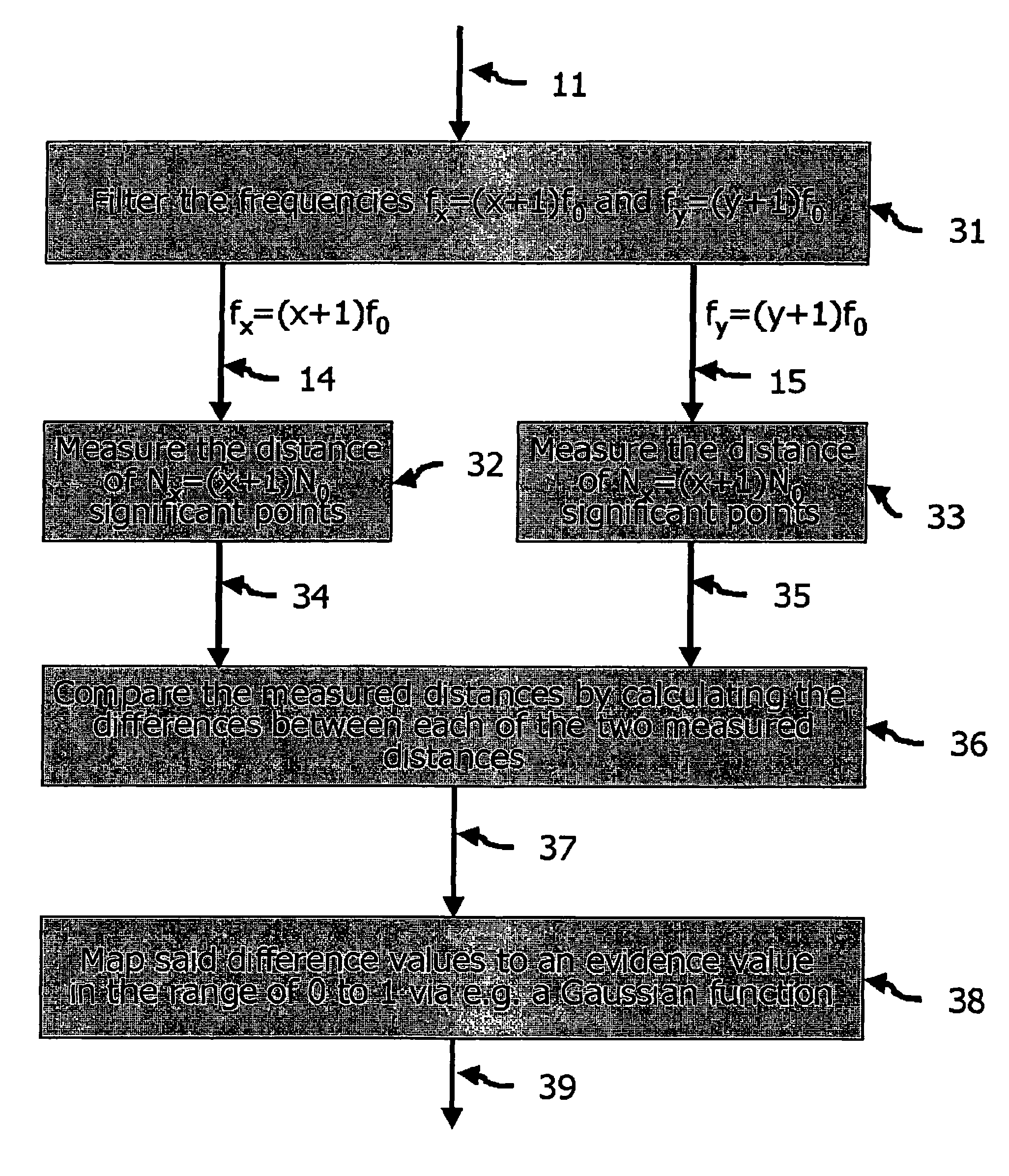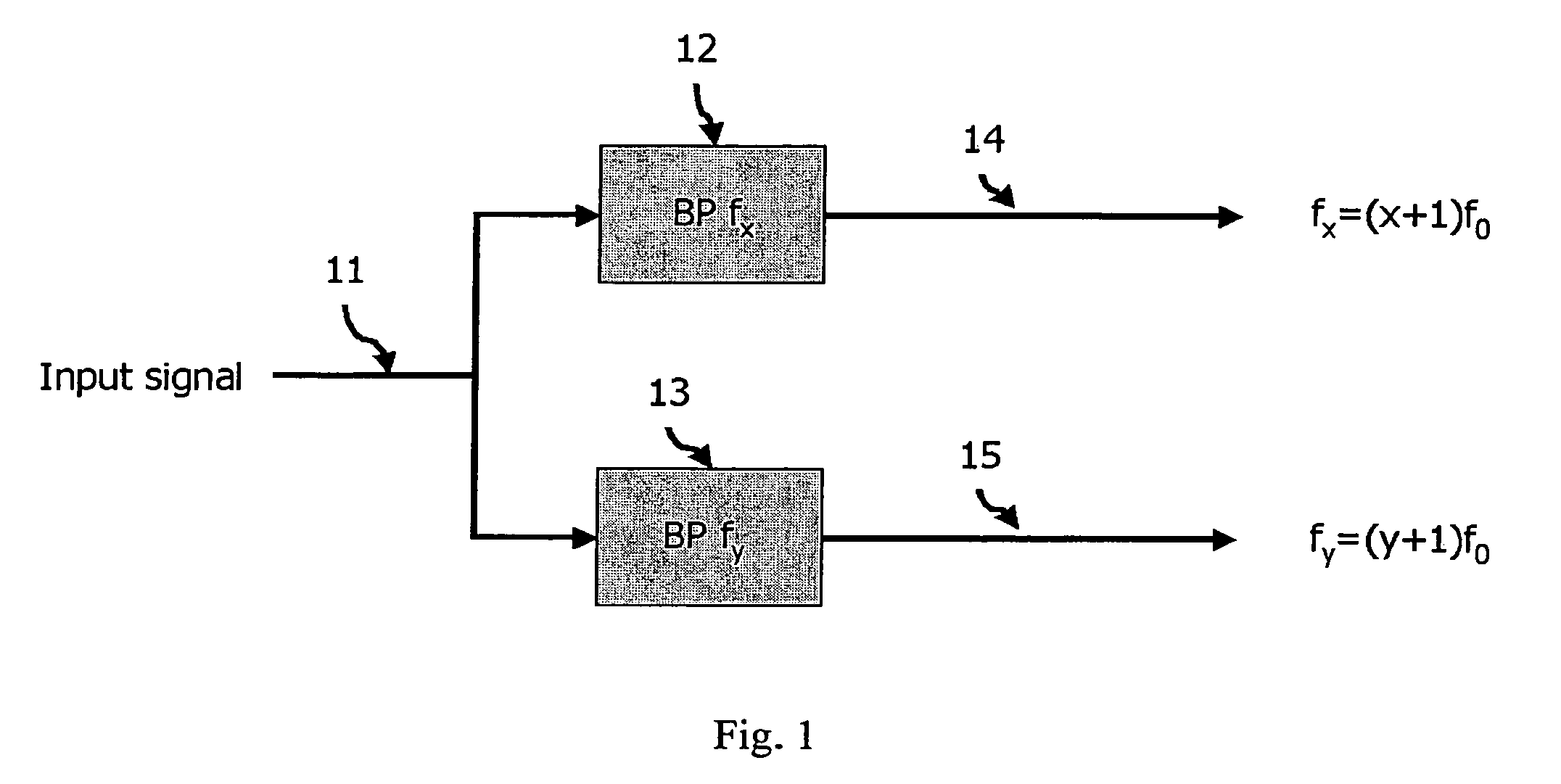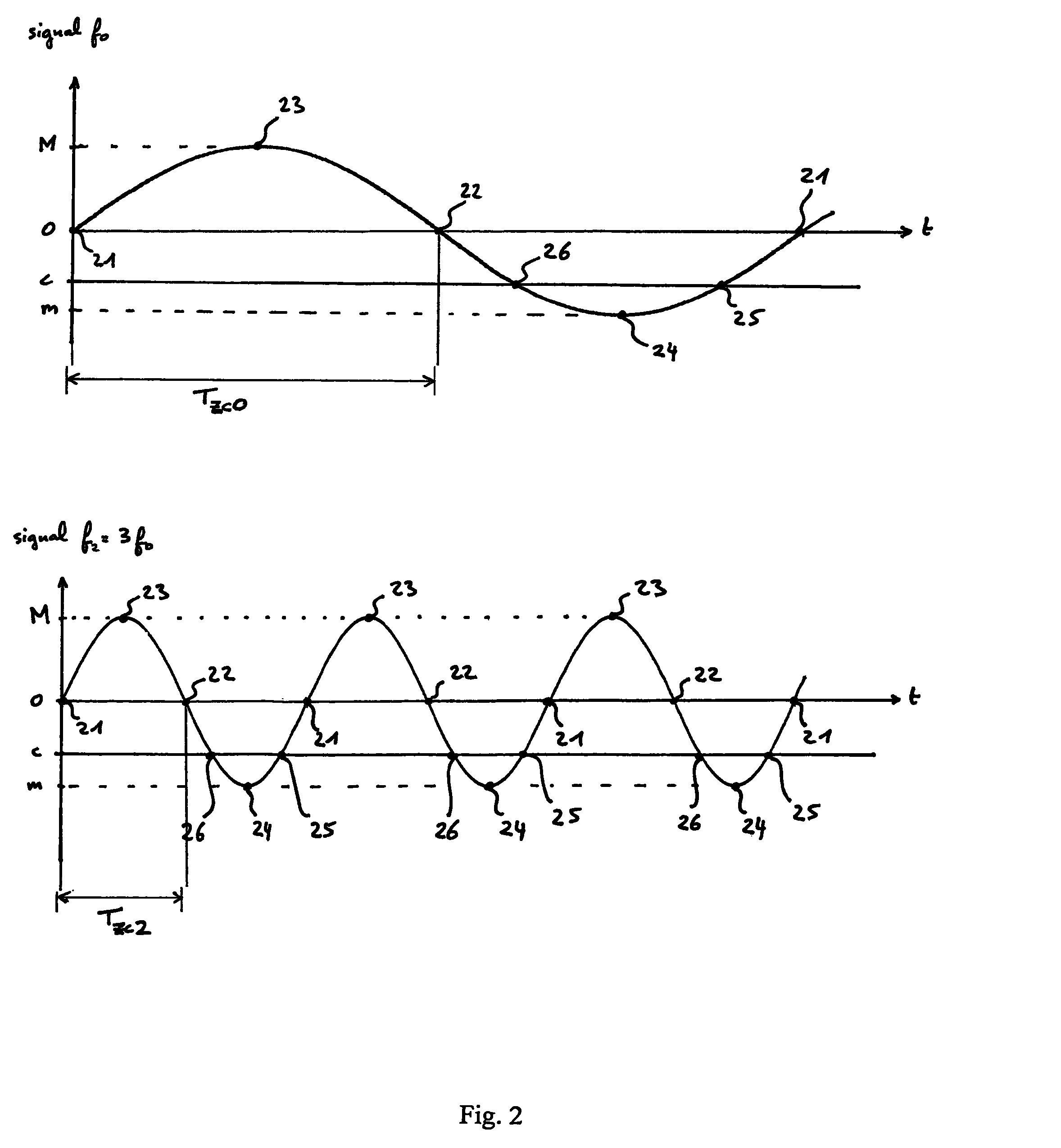System and method for determining a common fundamental frequency of two harmonic signals via a distance comparison
a distance comparison and fundamental frequency technology, applied in the field ofsignal processing, can solve the problems of inability to identify and low precision of conventional techniques, and achieve the effect of efficiently determining and efficiently determining
- Summary
- Abstract
- Description
- Claims
- Application Information
AI Technical Summary
Benefits of technology
Problems solved by technology
Method used
Image
Examples
Embodiment Construction
FIG. 1 shows a system for obtaining two frequency bands 14, 15 filtered from an input signal 11 according to one embodiment of the present invention. One embodiment of the present invention determines whether the two frequency bands 14, 15 originate from the same fundamental frequency. According to one embodiment, the frequency band 14 contains the fundamental frequency. According to another embodiment, the actual fundamental frequency is not present in the two frequency bands and a comparison is performed between harmonic signals. A further embodiment of the present invention compares signals that do not contain the fundamental frequency, such as some speech signals.
According to one embodiment of the present invention, filter bands in a harmonic relation are compared to determine whether two signals 14, 15 emanate from a single source or to determine whether two or more band-pass signals are harmonics of a fundamental frequency. According to a further embodiment, the signal 14 cont...
PUM
 Login to View More
Login to View More Abstract
Description
Claims
Application Information
 Login to View More
Login to View More - R&D
- Intellectual Property
- Life Sciences
- Materials
- Tech Scout
- Unparalleled Data Quality
- Higher Quality Content
- 60% Fewer Hallucinations
Browse by: Latest US Patents, China's latest patents, Technical Efficacy Thesaurus, Application Domain, Technology Topic, Popular Technical Reports.
© 2025 PatSnap. All rights reserved.Legal|Privacy policy|Modern Slavery Act Transparency Statement|Sitemap|About US| Contact US: help@patsnap.com



